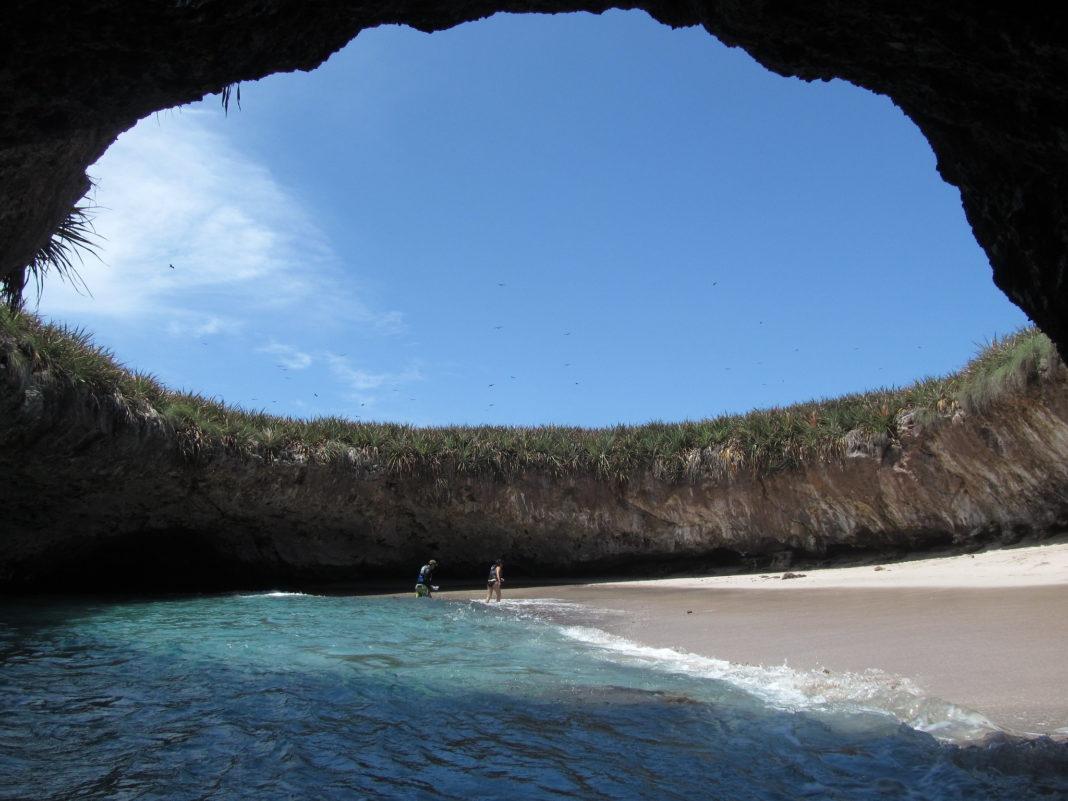Playa del Amor, commonly known as the Hidden Beach, is a feature of one of the Marieta Islands, located some 22 nautical miles west of Puerto Vallarta, Mexico, at the mouth of Banderas Bay.
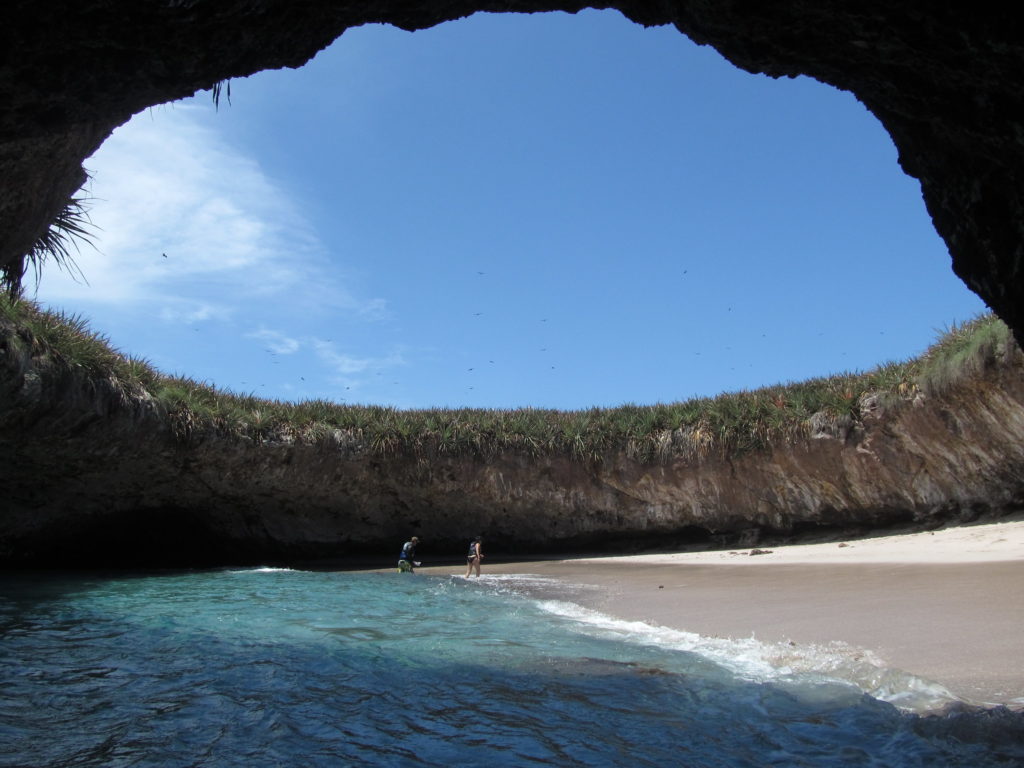
It looks like something out of a fantasy novel: a wide, sandy cavern with the blue waters of the Pacific rushing in. The Marieta Islands is a group of uninhabited islands formed by underwater volcano eruptions. They are natural wonders, but it was something other than the volcanic activity that brought the burrowed beach to light.
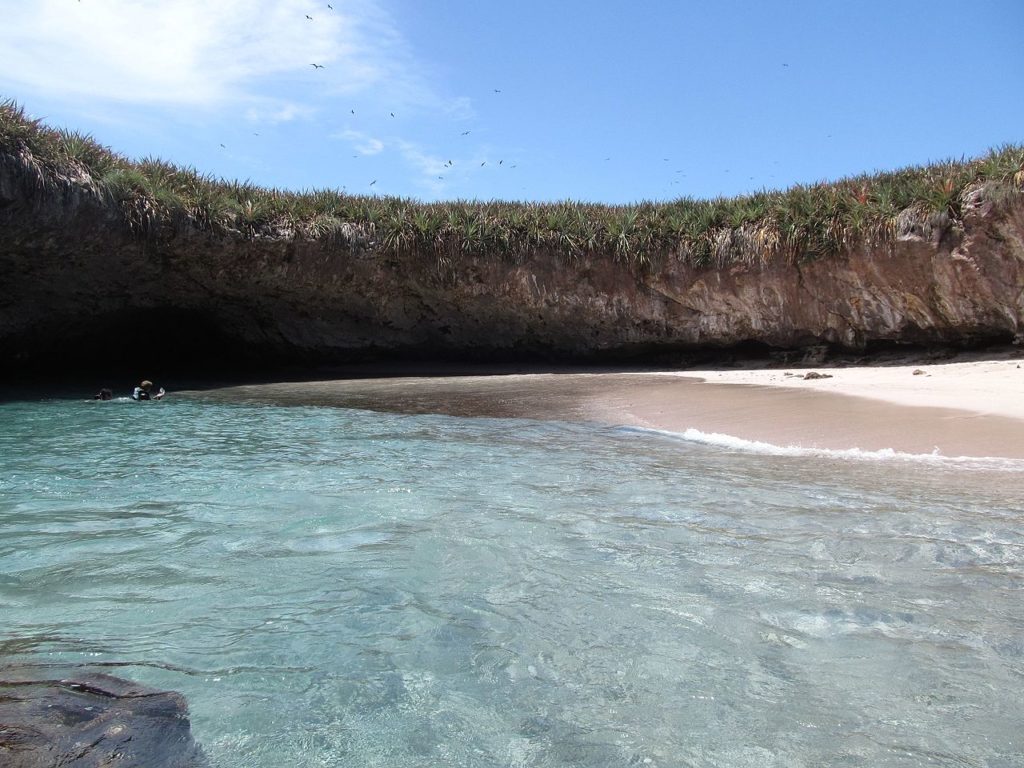
Its formation is said to be the result of intense volcanic activity that over the millennia has formed the entire archipelago. It seems to have occurred due to the explosion of a bomb. In the early twentieth century, these islands were deserted and subject to various military exercises by the Mexican government. The opening is also attributed to an explosion, which now gives life to this unique underground tower.
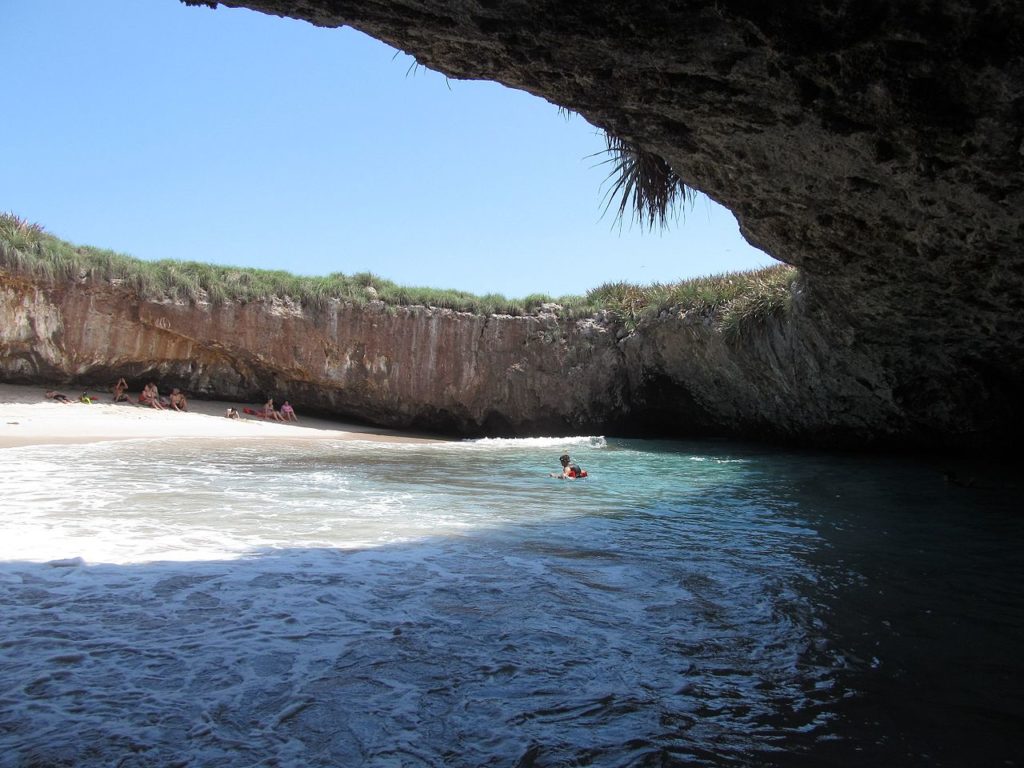
The Hidden Beach is invisible from the outside and is only accessible through a long water tunnel that links the beach to the Pacific Ocean. There are approximately six feet of space above water level, so visitors can arrive at the beach by swimming or kayaking. The islands remain uninhabited but are frequently visited by tourists who come to enjoy the diverse marine wildlife and the unique tropical Eden of Playa del Amor.
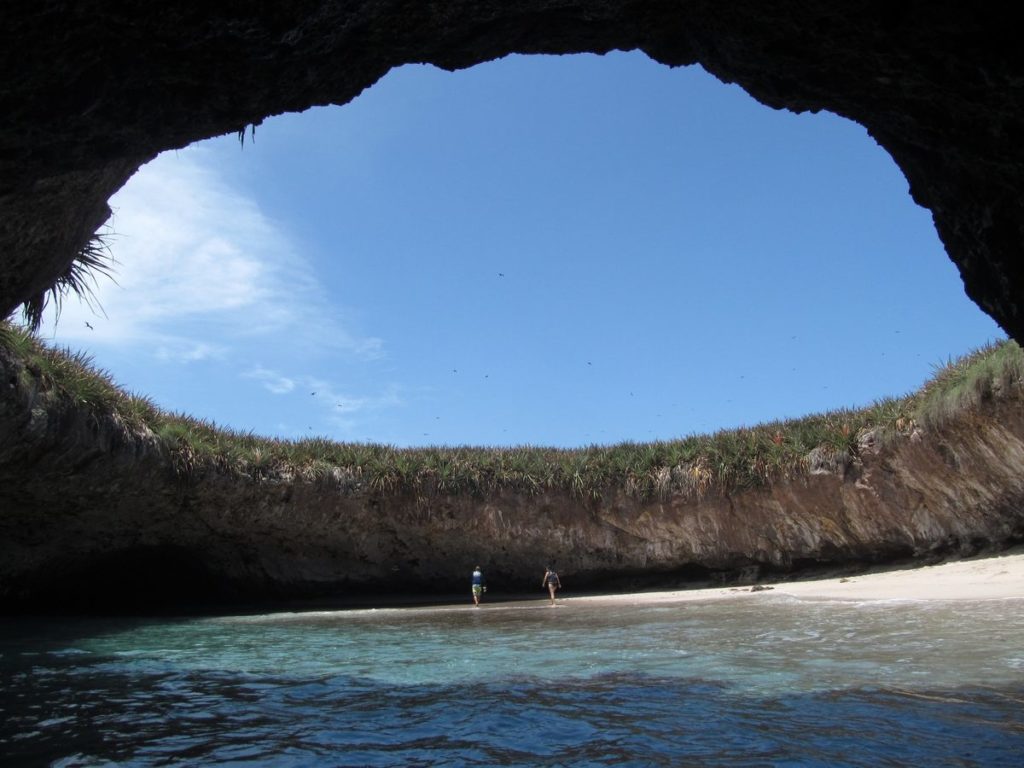
Today Hidden Beach is part of the Marieta Islands National Park and is protected by the government against fishing, hunting, and human activity. It is a protected heritage site thanks to the intervention of a group of scientists led by the explorer Jacques Cousteau who in 1960 led a protest to convince the Mexican authorities to cease all practices harmful to the immense natural wealth of these islands.
According to the Internet





